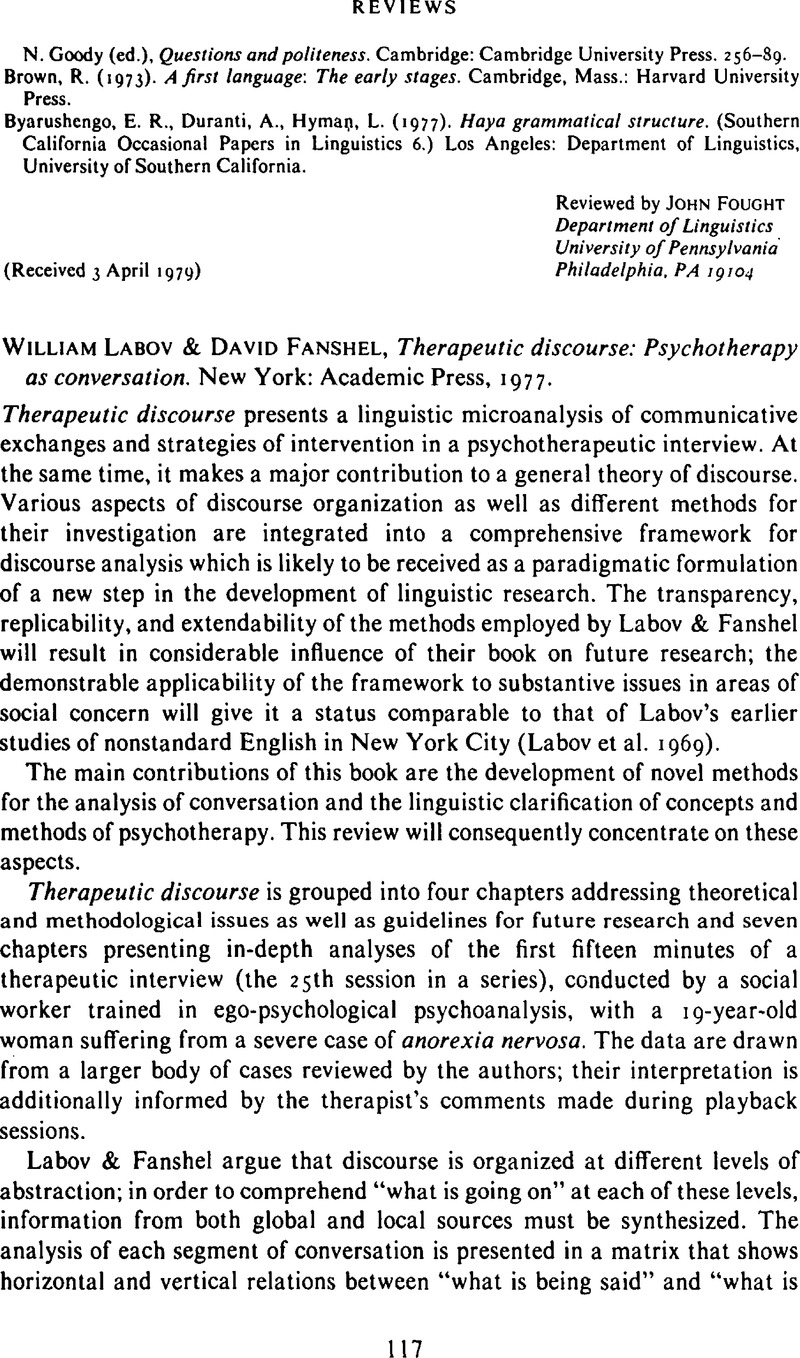Crossref Citations
This article has been cited by the following publications. This list is generated based on data provided by Crossref.
Wiedemann, Peter M.
1986.
Don't tell any stories.
Poetics,
Vol. 15,
Issue. 1-2,
p.
43.
Pea, Roy D.
and
Russell, Robert L.
1987.
Language in Psychotherapy.
p.
303.
Vogt, Rüdiger
1987.
Über die Schwierigkeiten der Verständigung beim Reden.
p.
15.
Laffal, Julius
1987.
Language in Psychotherapy.
p.
71.



